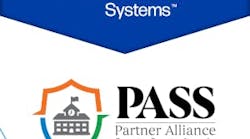On the surface, a school’s mission seems quite clear – to teach, to nurture, to inspire. Whether it’s an elementary school, a high school or a university, students should be free to explore the world around them. Teachers, books, and chalkboards are all imperative to help achieve these objectives. And just as important is a safe and secure environment.
Though the tragedies that have shocked the country in recent years remain anomalies, every school has to plan for the worst. School administrators are tasked with the challenge of securing students and staff, while not allowing fear to dictate the atmosphere and attitude of a school.
At ASSA ABLOY, we strive to address the security needs of many types of facilities, including schools, by pairing innovative access control technologies with practical applications. Because security should provide peace of mind and a feeling of freedom, these solutions should not be top of mind for everyday users, but quick and easy to use if or when they are needed.
As schools continue to face new challenges, they must also educate themselves with information to meet those changes. Learn from some of the challenges and successes your colleagues have experienced in our roundtable discussion on school security.
For this special roundtable-in-print sponsored by ASSA ABLOY, Security Technology Executive’s Editor-in-chief Steve Lasky sat down with three top education security professionals. The following Q&A highlights some topical issues now facing this vertical market.
STE: As someone involved with school and campus security and emergency management, what keeps you up at night?
- Joe Perchetti: The worst case scenarios -- the loss of life, loss of structure and infrastructure. The dealing with the trauma to associated people and stress coping management for the eventual return to normal (operations).
- Karen Dickey: The thought that there was something else my team or I should be doing in terms of the safety of our staff and students. Security is a process, not a product. Our plans are never ever “finished”, or have all layers of security perfectly in place. It is dynamic process, so working hard towards due diligence is the key, along with practice, practice, practice.
- Ron Self: Anything and everything that has to do with keeping my kids safe. I often say that some of my best thoughts hit me in the middle of the night. School shootings have become very common place in today’s society so anything that I can do to prevent these is forefront. Recently my focus has been more on training our students and staff to be less of a sitting duck.
STE: Does your school district have a unified emergency communications and response plan and policy? If so, how does it function? If not, how are emergency situations handled?
- Perchetti: We have multiple communication resources, such as IP phones, voicemail, mass notification system, World Wide Web, cellular phones and two way radios. Each building has an emergency communications plan. Central administration supports during greater emergent needs. We also have the capability to communicate with our emergency responder’s via multiple resources
- Dickey: I work primarily with smaller independent schools. When I consult with these schools my first objective is to install a robust Emergency Operations Plan -- a plan based on FEMA’s school example. After that, an Emergency Response Team is selected and trained on the principles of the NIMS Incident Command System. Each team member understands what his or her responsibilities are so that in the event of an emergency the team can go into action addressing the event in a well-reasoned and effective manner.
- Self: Our response plan is more of an all-hazards plan, but any time a school district is involved in an emergency there will always be some type of unified command, with the school district and the police department typically involved. We have SRO’s in our district that are provided by the police department, and they are trained on our crisis response plan, and act as the liaison between the police department and the school.
STE: Has your school system had serious discussion related to allowing armed security staff on campus? If so, where does that debate stand?
- Perchetti: Although the topic has surfaced from time to time, we have not. Our police department is a short distance from the buildings
- Dickey: Of the schools with which I have worked, only one is now considering hiring armed security personnel.
- Self: This is one of those questions that I could spend all day debating. I spent over seven years as a police officer, with most of that time being an SRO. I am not a proponent of having armed “security” staff unless they are certified police officers. Training is key here and “security” staff typically does not receive enough quality training or experience to carry a weapon in a school environment. If you gave me the option of three security guards or one SRO I would take the SRO all day long. I want weapons on my campus but I want them carried by my SRO.
STE: Do you believe Zero Tolerance Policies are effective tools in preventing student-driven school violence?
- Perchetti: I realize in one aspect that Zero Tolerance has muddied the process, however; it removed some of the uncertainties school officials face. I believe the policies are effective when everyone is educated on their value.
- Dickey: For the schools with which I work, I do not believe in a Zero Tolerance Policy is an effective tool. There are always extenuating circumstances to every student incident. I feel each incident must be evaluated individually. I could envision a situation where a student who has been expelled for what could be considered a minor infraction feels persecuted by the school, thus creating a potentially violent occurrence.
- Self: Zero Tolerance Policies are only good for causing your staff to break policy. There should always be some type of discretion involved in school violence polices. For example, a school has a zero tolerance policy on weapons on campus. A high school kid went hunting or sport shooting the day before and left the weapon in his vehicle by accident. The student does the right thing and notifies an administrator. The administrator is now put in the situation of following policy and expelling the student or suggesting the student go home and pretend it did not happen. Zero Tolerance Policies never end well for responsible students. As long as these exist, policies will always be broken.
STE: Do your schools consider lockdown as a primary response to an on-campus incident? If not, what alternatives do you offer?
- Perchetti: Absolutely not. We realize that incidents vary greatly, so we’ve trained in multiple scenarios and responses. Other alternatives are situation dependent; we might Lock-in or Shelter in Place. With sheltering, all of our locations have adequate water and sustenance for building occupants for three days.
- Dickey: I would say yes, but schools are moving more towards identifying potential aggression by students, staff or parents earlier through the creation of Threat Assessment Teams. These teams meet weekly to discuss and evaluate issues. Another proactive approach is to train students and staff on strategies for identifying strangers on campus. I am also a firm believer that schools invest in full time security personnel who have a presence on campuses anytime students are present.
- Self: I really dislike the word lockdown. Lockdown to me means to hide in a corner and become a “sitting duck”. If there’s an active shooter at one of my schools, the staff -- which I train -- will know what to do. I have trained all of my schools to follow “ADD”: avoid, deter, and defend --with defend being the last-ditch effort. You don’t fight back until you are put in a no-win situation. A shooter wants an easy path, so if someone does get in, we do fight. We throw things. It’s very difficult to get any sight scope when things are being thrown at you. Another option we train, although it is typically not the first option, is to evacuate. To accomplish this, Blytheville school surveillance camera feed to secretaries’ desktop computers. Our secretaries are trained to constantly announce over the intercom system where the shooter is located. If we can evacuate safely, then that is exactly what we are going to do. Basically we took the cookie cutter lockdown plan and put it in the shredder
STE: If the wake of recent campus shootings, what security technologies are being implemented in your schools and what new security policies and procedures are in place?
- Self: We recently had the anniversary of the Newtown shootings and it seems that, as a whole, school security is in the same place it was before the shootings. Most schools didn't do anything before Newtown and are still not doing anything after Newtown. What a district does in the wake of shootings really depends on the systems that the school had in place before. We made no changes because we already had a great proactive system. That system includes security cameras that provide footage I and school secretaries can view on their desktop computers, and that I can view from my car. It also includes aggressive security drills and training, among other measures. We are in the process of installing an additional 75 classroom cameras with audio. This install is not in response to any of the recent shootings, but a continued project that we add to every year. When this year’s install is complete I will have one camera for every eight students, with the complete system being Axis IP.
- Perchetti: We conducted community meetings, staff in-services’, updated our Emergency Response document, updated our Tragedy Management Plan, completed thorough internal risk assessments, toured the facilities with the police chief, updated our Red Cross Agreements, upgraded electronic door solutions, closed circuit television expansion, DelPASS (911) communications system, AIPhone installation and functional exercises with our local law enforcement. Training on all of the systems was provided.
- Dickey: Some of the schools with which I work are putting in access control systems and hiring more security personnel. Others are addressing communication issues through the use of an interior and exterior speakers system, along with strobes for noisy areas, such as cafeterias and gyms as an alert for lock-down or weather shelter-in incidents.
STE: Can you share how your schools have funded security technology improvements, or where you are currently seeking funding?
- Perchetti: With careful consideration, our improvements are funded by short and long range capital planning. There is no funding currently being sought.
- Dickey: Since the schools I work do not rely on state or federal funding, they fund security improvements through their budget process, which are tied to school tuition and donations.
- Self: Funding is always a problem for public school systems. I was lucky enough to lobby some of the stimulus money that my district received a few years ago to begin some larger projects, such as a complete camera overhaul. My superintendent and school board are very supportive of security, which allows me to continue adding to and funding new projects every year. We also have an awesome technology team that assists me with all installs. We install all cameras in house. We are constantly looking for grants, but it seems even though school security is top of mind, funding is still takes a backseat.
The Panel:
Joe Perchetti, Security Supervisor of Radnor Township School District -- Joe is currently employed with the Radnor Township School District as the supervisor of the district’s security department. Among many duties, his primary responsibility is maintaining a safe and secure environment, by balancing the need to protect students, staff and property with the desire to create an open environment that remains conducive to learning. He is charged with public safety and security management of over 1,100 professional and support staff; nearly 3,900 students; within seven buildings, containing 779,000 square feet on 181 acres.
Karen Dickey, CPP LLC -- Karen has served as the Business Manager and later the Director of Operations for a large independent school in the southeast where she accumulated over 20 years of experience planning and supervising in the areas of Emergency Response, Facilities, Transportation and School Health. She earned her ASIS Certified Protection Professional (CPP) Designation in April 2011 when she began her school security consulting business.
Ron Self, Director of Safety and Security, Blytheville School District -- Ron began his law enforcement career in 1999 and for the past 15 years has dedicated himself to law enforcement and security. For the past 7 years he has served as the Director of Safety and Security with the Blytheville School District and during his time here he has made multiple improvements in school security including literally rewriting the book on the districts lock down procedures and installing an elaborate IP camera system.



